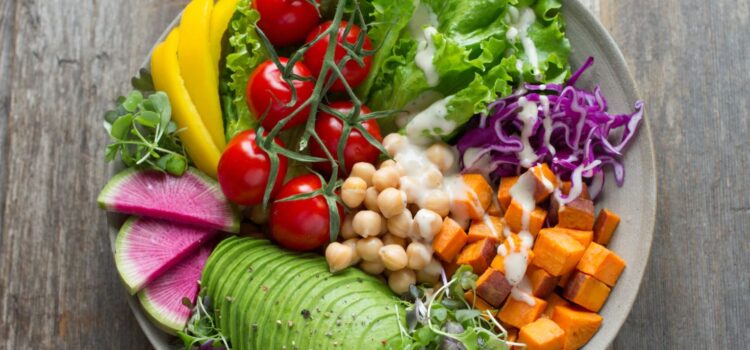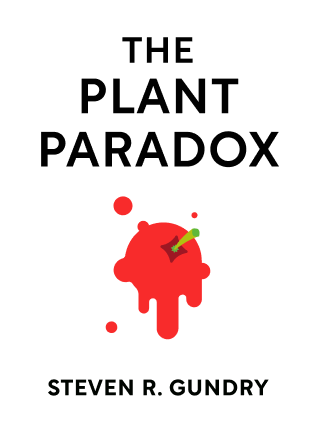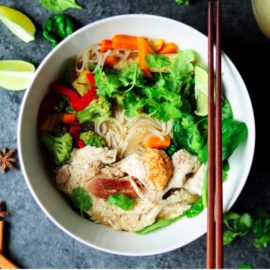

This article is an excerpt from the Shortform summary of "The Plant Paradox" by Steven R. Gundry. Shortform has the world's best summaries of books you should be reading.
Like this article? Sign up for a free trial here .
What can you eat on the Plant Paradox meal plan? Is there a Plant Paradox shopping list to help prepare you for the diet?
Read on to see the Plant Paradox meal plan that will help you implement a low-lectin diet.
Plant Paradox Meal Plan
(Shortform note: Part 3 of the book outlines meal plans for the program as well as specific recipes. Rather than include everything, we’ll share the main takeaways. If you feel you’d benefit from dozens of PPP-friendly recipes, consider buying the original book.)
Lectin Free Meal Plan for the Three-Day Cleanse
The Plant Paradox meal plan for the three-day cleanse starts every day with a green smoothie for breakfast.
There are two snacks a day—between breakfast and lunch, and again between lunch and dinner. The author recommends romaine lettuce boats filled with guacamole, half an avocado seasoned with lemon juice, or one-quarter cup of approved nuts.
Lunch each day includes a serving of animal protein, while some dinners are meatless. Vegan and vegetarian alternatives to meat include grain-free tempeh, VeganEggs, cauliflower steaks, hemp tofu, and pressure-cooked legumes. This lectin free meal plan has some flexibility to adapt to your needs.
Plant Paradox Meal Plan for the Six-Week Gut Repair
The format of the Plant Paradox meal plan for Phase 2 is the same as Phase 1: three meals with two snacks of either guacamole boats, avocado, or nuts.
While the green smoothie is still a breakfast option, alternatives include other smoothies, various muffins (made without lectin-containing grains or flours), and plantain pancakes.
Eat no more than 4 ounces of animal protein per meal, totaling no more than 8 ounces per day. Animal protein sources include eggs, pastured chicken, canned and fresh salmon, shrimp, canned sardines, and crab.
Most lunches and dinners include a salad tossed with (homemade) vinaigrette, and they all include some form of raw, grilled, roasted, or stir-fried approved vegetables. Make sure to put plenty of the approved foods on your Plant Paradox shopping list.
Long-Term Program with Five-Day Modified Vegan Fast
As we talked about, Phase 3 is the final phase, which you should follow indefinitely (or you can choose to stay on Phase 2 indefinitely). The main differences from Phase 2 are that you’ll cut your animal protein intake in half and gradually reintroduce certain lectins. There isn’t as much structure on the Plant Paradox meal plan for Phase 3.
You can also do a modified vegan fast five days each month; that Plant Paradox meal plan is simply an extended vegan version of the three-day cleanse from Phase 1.
Keto Plant Paradox Intensive Care Program
There are a few adjustments to adapt the regular Phase 2 lectin free meal plan to the keto version.
- Reduce your animal protein intake to no more than 4 ounces a day.
- Use keto vinaigrette (olive or perilla oil, MCT oil, and vinegar) for all salads.
- The second snack of the day is 1 tablespoon of coconut or MCT oil.
- A tablespoon of MCT is added to most meals.
The Right Ingredients and Tools: Plant Paradox Shopping List
Many of the ingredients you’ll need to follow the PPP can be found in a grocery store or farmers market, but for some—like millet or cassava flour—you may need to go to a natural food store or order them online.
Don’t overlook the details when you’re buying these ingredients; even some of the common products are available in some varieties you’ll want to avoid. Here are some of the details you’ll want to watch out for with certain foods.
- Almond butter should be unsweetened and made from raw, organic, ideally non-GMO almonds. Be sure it contains no partially hydrogenated oils (trans fats).
- Almond milk should be unsweetened, unflavored, and made from organic and non-GMO almonds.
- Baking powder should be aluminum free.
- Chocolate should be unsweetened and at least 72% cacao.
- Cocoa powder—different from cocoa powder mix—should be natural (non-alkalized) and free of potassium bromate and potassium carbonate.
- Coconut cream should have no added sugar and be packaged in a BPA-free can.
- Flaxseed meal should be cold-milled if you buy the ground version; you can also buy it whole and grind it in a coffee or spice mill. Once ground, store in the refrigerator or freezer.
- Honey should be raw and either local or Manuka.
- Olive oil should be extra-virgin and ideally cold pressed (or first pressed).
- Parmigiano-Reggiano—not to be confused with generic Parmesan—should be imported from Italy, since cows there don’t produce casein A-1.
- Salt should be iodized sea salt.
- Vanilla extract should be pure and ideally organic; avoid imitation vanilla extract.
- Yogurt should be organic, unsweetened, unflavored, and made from goat, sheep, coconut, or hemp milk.
To make the recipes in the PPP, it’ll be best to have these appliances:
- Blender (or single-serving type, like the Magic Bullet)
- Food processor (full size or mini-version)
- Microwave
- Pressure cooker
- Salad spinner
- Spiralizer

———End of Preview———
Like what you just read? Read the rest of the world's best summary of Steven R. Gundry's "The Plant Paradox" at Shortform .
Here's what you'll find in our full The Plant Paradox summary :
- Why eating more vegetables isn't enough, and why some vegetables are toxic to your body
- The science behind lectins and how they tear apart your body, making you fat and sick
- The 6-week program to get your body back on healthy grack






